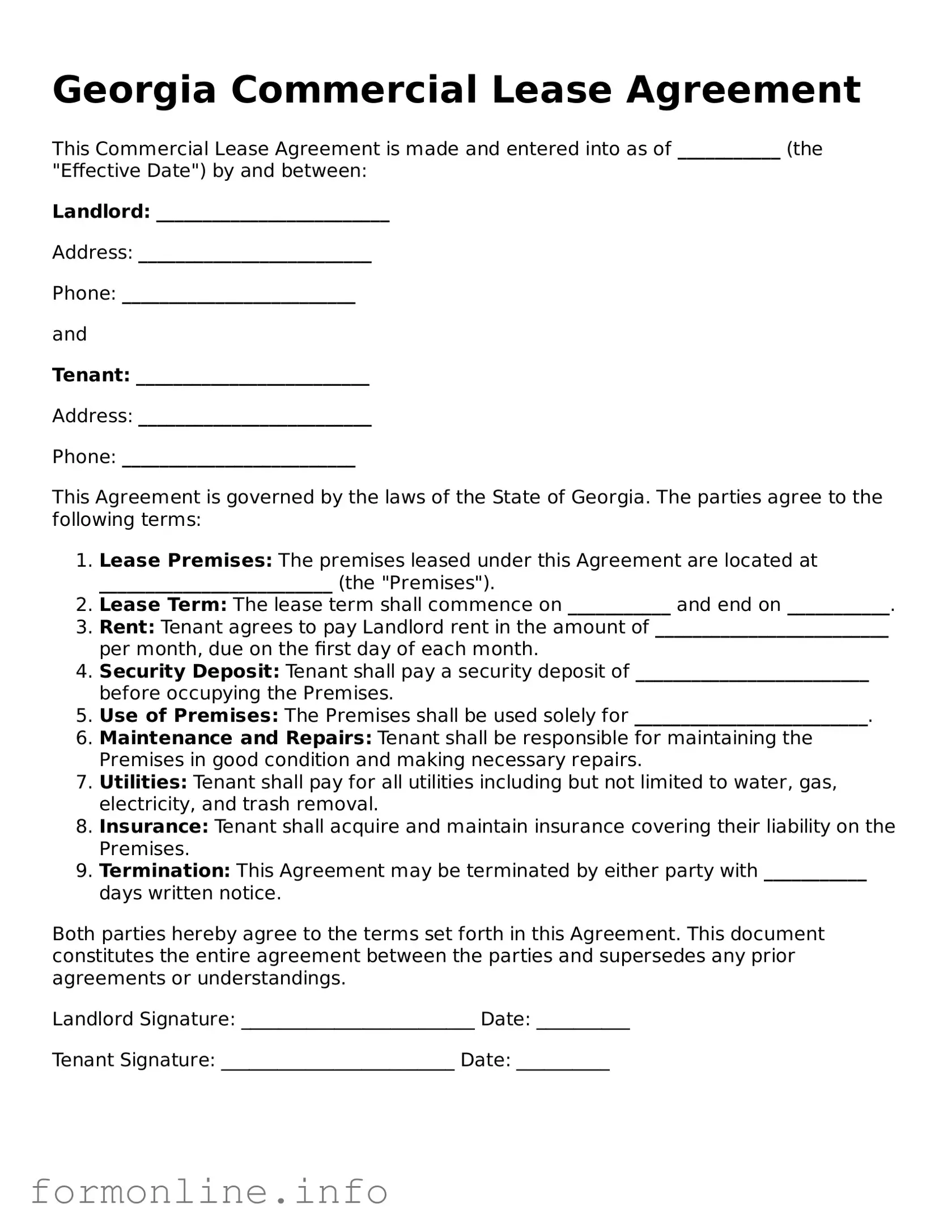Georgia Commercial Lease Agreement
This Commercial Lease Agreement is made and entered into as of ___________ (the "Effective Date") by and between:
Landlord: _________________________
Address: _________________________
Phone: _________________________
and
Tenant: _________________________
Address: _________________________
Phone: _________________________
This Agreement is governed by the laws of the State of Georgia. The parties agree to the following terms:
- Lease Premises: The premises leased under this Agreement are located at _________________________ (the "Premises").
- Lease Term: The lease term shall commence on ___________ and end on ___________.
- Rent: Tenant agrees to pay Landlord rent in the amount of _________________________ per month, due on the first day of each month.
- Security Deposit: Tenant shall pay a security deposit of _________________________ before occupying the Premises.
- Use of Premises: The Premises shall be used solely for _________________________.
- Maintenance and Repairs: Tenant shall be responsible for maintaining the Premises in good condition and making necessary repairs.
- Utilities: Tenant shall pay for all utilities including but not limited to water, gas, electricity, and trash removal.
- Insurance: Tenant shall acquire and maintain insurance covering their liability on the Premises.
- Termination: This Agreement may be terminated by either party with ___________ days written notice.
Both parties hereby agree to the terms set forth in this Agreement. This document constitutes the entire agreement between the parties and supersedes any prior agreements or understandings.
Landlord Signature: _________________________ Date: __________
Tenant Signature: _________________________ Date: __________
